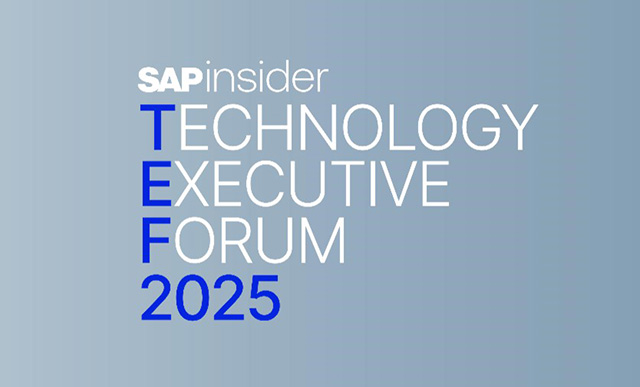Ensuring SAP’s Stability in the Cloud Age with RTS – Part 2
Meet the Authors
Key Takeaways
Cloud migration is essential for enhancing scalability and innovation, as on-premises systems like SAP ECC limit organizational growth in a rapidly evolving business landscape.
Utilizing managed services from providers like Resolve Tech Solutions is crucial for optimizing cloud investments, enabling organizations to focus on strategic initiatives while ensuring maximum performance and security.
Adopting hybrid cloud solutions offers flexibility for organizations transitioning from on-premises to cloud infrastructure, allowing for a phased approach that minimizes disruption and supports gradual adaptation.
The modern business landscape is constantly changing, demanding unprecedented agility and scalability from organizations of all sizes. For businesses still relying on on-premises platforms like SAP ECC, this rapid evolution presents significant challenges. In fact, SAPinsider research shows that the pressure to modernize infrastructure to lower costs and simplify IT comes only second to business focus on digital transformations as a key factor driving organizations’ cloud deployment strategy.
In the second of this two-part interview with SAPinsider, Anup Sinha, Chief Delivery Officer at Resolve Tech Solutions (RTS), discusses how on-premises users can enhance scalability by migrating to the cloud and the critical role played by managed services providers like RTS in this migration.
Many businesses grapple with the limitations of on-premises infrastructure, including limited scalability, high maintenance costs, and inflexibility. These can hinder growth and innovation.
Explore related questions
Enhancing Operational Effectiveness
According to Sinha, migrating SAP ECC to the cloud unlocks enhanced scalability, cost efficiency, and access to cutting-edge services. “Cloud platforms enable elastic resources, cost-effective pay-as-you-go models, global reach, and improved business continuity, including disaster recovery and high availability,” he says. Additionally, it enables businesses to scale up or down as needed and ensures a smoother transition to SAP S/4HANA. These factors make migration to the cloud compelling for businesses aiming to stay competitive.
The migration process itself involves careful assessment, a proof of concept, meticulous data migration, and ongoing post-migration optimization. However, Sinha notes, “For businesses hesitant to fully embrace the cloud, hybrid solutions offer a viable middle ground. While maintaining scalability requires continuous effort, the long-term advantages of cloud migration, including improved innovation, make it a valuable investment.”
The Benefits of a Cloud Infrastructure
Moving to the cloud offers businesses many advantages. Sinha lists some of these benefits:
- Enhanced cost efficiency through reduced infrastructure and maintenance expenses.
- Access to advanced technologies like AI and machine learning to unlock new insights and automate processes.
- Robust security, high availability, and disaster recovery capabilities, ensuring business continuity.
- Faster innovation, facilitating better collaboration among teams, and simplified IT management through managed services and centralized control.
- Support for environmental sustainability by reducing energy consumption and promoting responsible resource utilization.
Finally, cloud adoption allows businesses to focus on their core competencies, freeing up resources for growth and agility and ultimately providing a crucial competitive edge.
How Managed Services Help
Sinha indicates that for organizations that have recently made the leap to the cloud, managed cloud services and application managed services are essential for maximizing the return on their investment (ROI).
Companies like RTS offer these crucial services, helping organizations optimize cloud operations and maintain peak performance. These services typically encompass infrastructure management, automation, cost optimization, enhanced security, and compliance, often with multi-cloud support across platforms like AWS, Azure, and Google Cloud.
“For applications, RTS provides 24/7 monitoring, performance optimization, regular updates, troubleshooting, and custom development,” Sinha says. Thus, by outsourcing cloud and application management, businesses can refocus their internal teams on strategic initiatives and core business goals.
What This Means for SAP Insiders
Cloud migration is crucial for scalability and innovation. The limitations of on-premises SAP ECC systems can hinder growth and innovation in today’s rapidly changing landscape. Thus, migrating to the cloud is a strategic imperative, not just a technical upgrade. SAPinsider research also shows that cloud migration enables SAP users to access advanced technologies, improve business continuity, and streamline IT operations.
Managed services optimize cloud investments. Optimizing cloud operations and ensuring peak performance requires specialized expertise. SAP partners like RTS provide expert management to maximize an organization’s return on cloud investments. SAP users can, therefore, leverage managed services to handle the complexities of cloud infrastructure, application management, and security, allowing internal teams to focus on strategic initiatives and core business goals.
Hybrid approaches offer flexibility. While full cloud migration offers significant advantages, it may not immediately be feasible for all SAP users. This means exploring hybrid options to gradually migrate critical workloads to the cloud while maintaining some on-premises infrastructure. This approach allows for a phased transition, minimizing disruption and allowing businesses to adapt to the cloud at their own pace.






